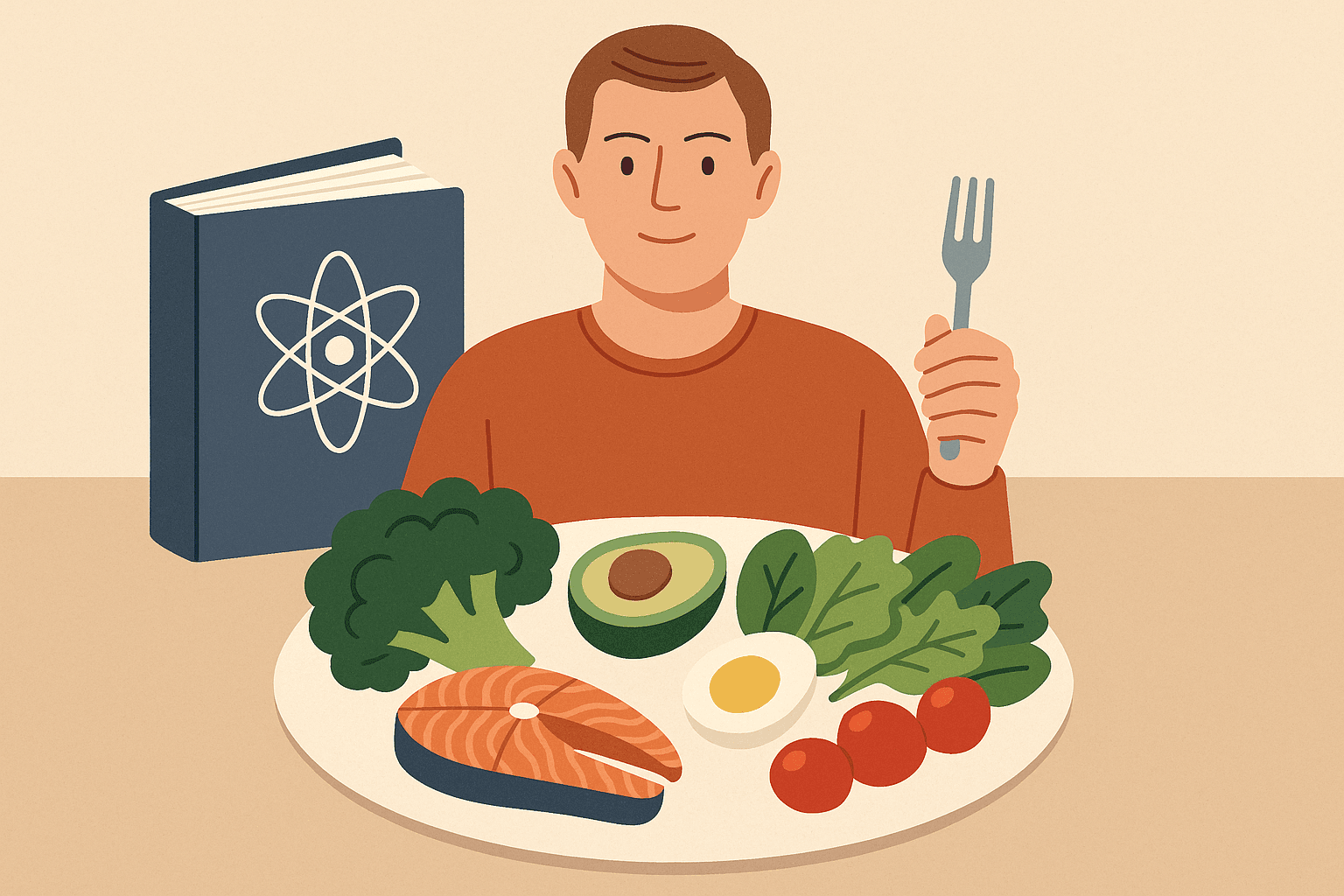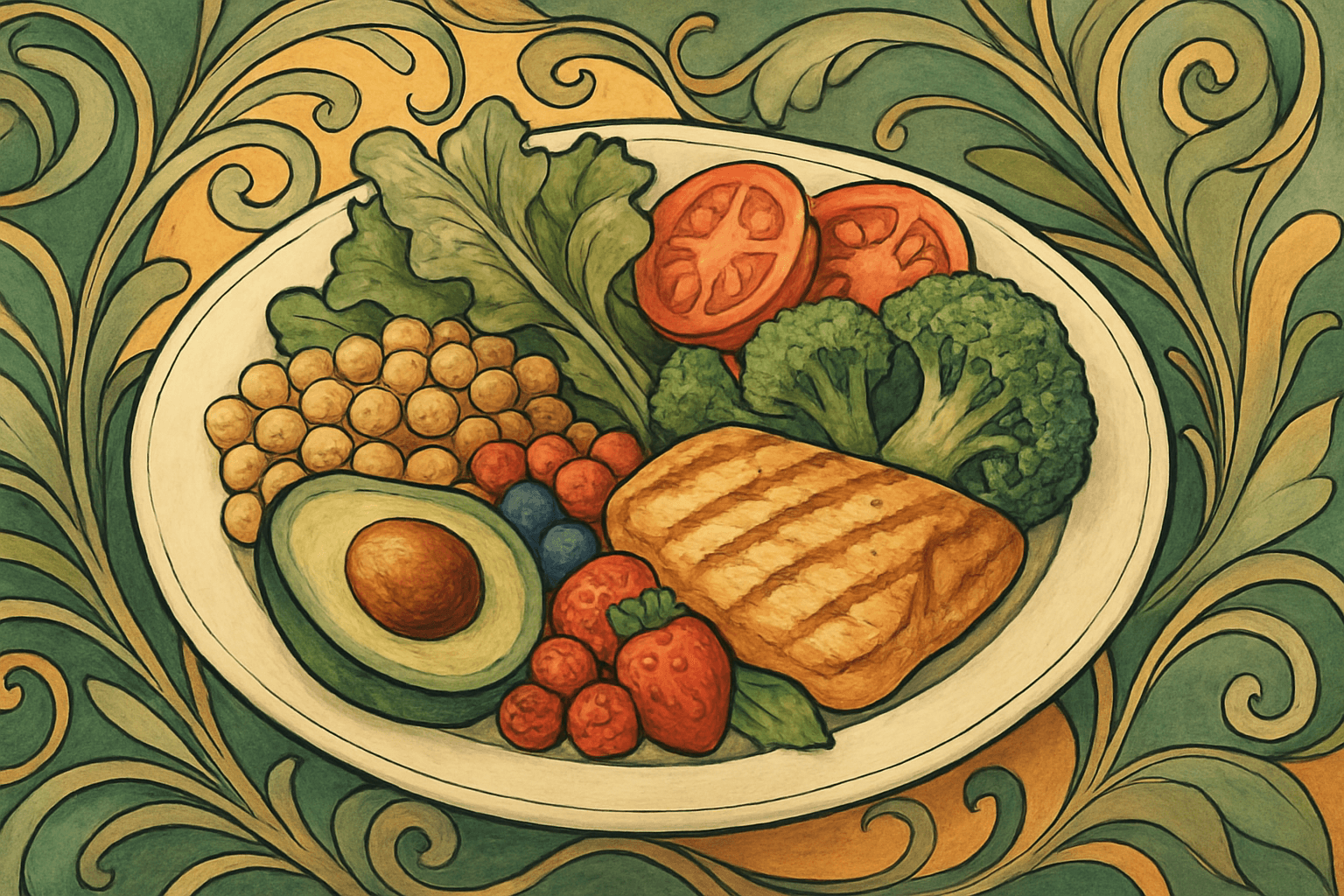The Fundamentals of Healthy Eating: What Science Really Says About the Food on Your Plate
Published on June 12, 2025

In a world full of diet fads and misinformation, real health comes down to science-backed, simple habits. Let’s break down the fundamentals of truly healthy eating — without the hype.
Step 1: Eat More Whole Foods (It’s Not a Fad)
Whole foods are minimally processed and close to their natural form.
Eat more of:
All fruits and vegetables
Whole grains like quinoa, oats, brown rice
Beans, lentils, chickpeas
Nuts and seeds (small portions)
Lean proteins like fish, chicken, eggs, tofu
Limit or avoid:
Sugary cereals and sweetened yogurts
White bread, pastries
Packaged snacks and fast food
Pro tip: Shop the outer edges of the grocery store first — that’s where whole foods live
Why it matters: Whole foods support digestion, stabilize blood sugar, reduce inflammation, and feed your gut microbiome — all key to long-term health and mood stability
Step 2: Balancing Your Plate (Easier Than You Think)
Aim for macronutrient balance in every meal.
Plate formula:
½ vegetables (not potatoes or corn)
¼ lean protein
¼ complex carbs
Drizzle of healthy fat (olive oil, tahini, avocado)
Sample meal: Grilled chicken + roasted broccoli and carrots + brown rice + hummus
Smart swaps:
White rice → quinoa
Cream sauce → yogurt dressing
Chips → air-popped popcorn or roasted chickpeas
Family tip: DIY bowls or tacos make healthy meals customizable and fun
Step 3: Don’t Be Afraid of Healthy Fats
Fat supports hormones, brain function, and cell health.
Good fats:
Olive oil
Avocados
Fatty fish (salmon, sardines)
Nuts and seeds
Limit:
Trans fats
Highly processed vegetable oils (corn, soybean)
Cooking tips:
Olive oil for salads and light cooking
Avocado oil for sautéing
Sesame oil for stir-fries
Snack hint: A spoon of almond butter or handful of walnuts boosts energy without sugar spikes
Step 4: Watch the Sugar (Natural Doesn’t Mean Neutral)
Too much sugar — even natural — drains energy and affects metabolism.
Watch out for:
Honey, maple syrup, agave
Fruit juices and dried fruits
Protein-light smoothies
Instead:
Eat whole fruits
Use cinnamon or vanilla in oats
Mix berries into plain Greek yogurt
Smart swaps:
Ice cream → frozen banana + almond milk
Sugary cereal → steel-cut oats + fruit
Sweetened yogurt → plain yogurt + cinnamon + nuts
Step 5: Thrive on Smaller Portions (Without Obsessing)
You don’t need to count every calorie — just be mindful.
Tips:
Use smaller plates and bowls
Pause mid-meal and check if you're full
Avoid eating from packages
Visual guide:
Protein = palm
Carbs = fist
Fat = thumb
Veggies = both cupped hands
Mindless eating fix: Pack leftovers right after serving
Practice with measuring tools occasionally to recalibrate your eye
Step 6: Eat With Purpose and Mindfulness
Healthy eating is about how and why, not just what.
Build these habits:
Sit down to eat, even for snacks
Chew slowly and savor
Avoid distractions like screens
Ask yourself: Hungry or just bored?
Quick rituals:
3 deep breaths before eating
Set fork down between bites
Give thanks for your meal
Bonus: Mindful eating reduces stress and supports better digestion and satisfaction
Step 7: Plan, Prep, and Be Consistent
Structure helps healthy habits stick.
Simple prep system:
Plan 3–4 base meals weekly
Batch cook grains, proteins, and veggies
Keep healthy snacks handy
Freeze leftovers in single servings
Grocery staples:
Veggies and fruits: spinach, berries, apples
Grains: oats, quinoa, whole grain pasta
Proteins: eggs, chicken, canned tuna, tofu
Pantry: olive oil, spices, pulses, seeds
Batch cooking ideas:
Vegetable soup
Roasted root veggies
Brown rice for bowls
Use a slow or pressure cooker for easy meal prep
Final Thoughts
You don’t need to eat every 3 hours or follow rigid rules. Focus on consistency, balance, and sustainable habits.
Start small:
Replace soda with water
Add one veggie a day
Cook at home twice a week
These micro-wins add up. Real health is a lifestyle, not a quick fix.
Your plate is your power — and you deserve to feel good every day by choosing food that fuels you.








